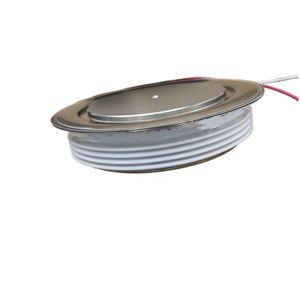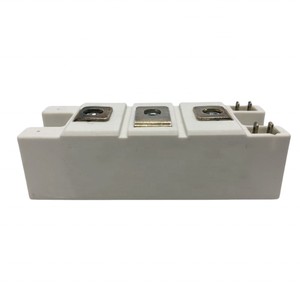Thyristors Online | High-Quality Power Semiconductors
Thyristors Unplugged: Where Electronics Really Get Switching!
(Where In The Field Of Electronics Would A Technician Find Thyristors In Use?)
Ever poke around electronics gear? Wonder where the real power control happens? Meet thyristors. These little semiconductor champs aren’t flashy like microchips. But they’re absolute workhorses. They handle serious power switching. Spotting them in action reveals the muscle behind many everyday gadgets and big industrial machines. Let’s find out where technicians actually bump into thyristors doing their thing.
1. What Exactly is a Thyristor? Think Electronic Gatekeeper.
Think of a thyristor as a super-smart electronic switch. Unlike a basic light switch you flip manually, a thyristor needs just one tiny electrical nudge to turn ON. Once it’s on? It stays on. It lets current flow freely. Turning it OFF requires something special. The current flowing through it must drop to nearly zero. This makes it perfect for controlling AC power. AC naturally drops to zero every half-cycle. This gives a natural OFF point. Technicians know them as SCRs too (Silicon Controlled Rectifiers). That’s the most common type. They come in different packages. Sometimes they look like a big transistor. Other times they bolt onto a hefty metal heat sink. Finding one means you’re dealing with power control. Significant power control.
2. Why Use Thyristors? Power Control Without Breaking a Sweat.
So why pick a thyristor over other switches? It boils down to handling power simply and reliably. They can control massive amounts of electricity. Think thousands of volts and hundreds of amps. All with just a small control signal. They are tough. They handle overloads well compared to some delicate transistors. Their simple ON/OFF nature makes control circuits straightforward. No need for complex constant signals. Just a pulse to turn it on at the right moment. This simplicity translates to ruggedness. They generate heat, yes. But good heat sinking makes them last ages. For jobs needing solid, reliable switching of AC power, especially at high levels, thyristors are often the best, most cost-effective solution. They are the go-to component for brute force control.
3. How Do Thyristors Actually Work? The Latch is the Key.
Understanding how a thyristor works helps technicians troubleshoot. Imagine it has three electrical connections: Anode, Cathode, and Gate. The main power flows from Anode to Cathode. The Gate is the control. When the voltage between Anode and Cathode is positive, the thyristor is ready but blocking current. Applying a small positive pulse to the Gate relative to the Cathode triggers it. This “fires” the thyristor. It instantly latches ON. It stays ON even if the Gate pulse disappears. Power flows freely from Anode to Cathode. It stays on until the main current drops below a tiny “holding current” level. This naturally happens in AC circuits when the voltage crosses zero. This is called “natural commutation.” It’s why thyristors excel in AC applications. Turning them off in DC circuits needs extra circuitry to force the current down. The latching action is their superpower for sustained power flow.
4. Thyristor Applications: Where Techs Spot Them Daily.
This is where technicians really see thyristors shine. They are everywhere power needs precise control. Look inside industrial motor drives. Thyristors regulate the speed of massive motors. They adjust the power smoothly. Check out modern light dimmers, especially for big incandescent or halogen lamps. They chop the AC waveform to dim the lights. Big battery chargers use them. They convert AC to controlled DC for charging. Uninterruptible Power Supplies (UPS) rely on thyristors. They switch power sources instantly during outages. Even your humble electric oven might use one. It controls the heating element precisely. Welding machines are thyristor territory. They manage the intense current needed for welding arcs. High-voltage DC power transmission uses massive banks of thyristors. They convert AC to DC and back again efficiently. If a device plugs into the wall and controls lots of power, chances are a thyristor is inside doing the heavy lifting.
5. Thyristor FAQs: Quick Answers for Techs.
Techs often have specific questions when working with thyristors. Here are quick answers:
What’s the difference between a thyristor and a transistor? Both switch, but thyristors latch on after a gate pulse and only turn off when current drops near zero. Transistors turn off instantly when the control signal stops. Thyristors handle much higher power typically.
Why do thyristors need big heat sinks? Even when ON, they have a small voltage drop (like 1-2 volts). With high currents flowing, this creates significant heat (Power = Voltage Drop x Current). Heat sinks pull this heat away to prevent damage.
Can I test a thyristor with a multimeter? Sort of. A basic diode test might show the main Anode-Cathode junction blocking in one direction. But confirming it latches requires a simple circuit with a battery, resistor, and switch to pulse the gate. Special component testers do this easily.
What causes a thyristor to fail shorted? Usually, massive overcurrent or overvoltage events. Think lightning strikes, severe load shorts, or voltage spikes exceeding its rating. This can physically weld the internal layers together.
(Where In The Field Of Electronics Would A Technician Find Thyristors In Use?)
What causes a thyristor to fail open? Less common, but extreme overheating over time can damage the internal connections. Sometimes a gate driver circuit failure prevents it from turning on at all.


